Fire Detection Systems
General information about fire detection systems
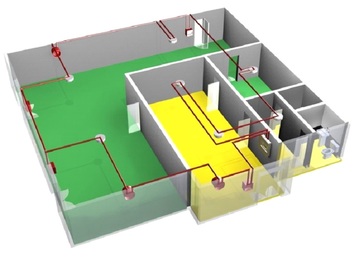
Introduction
Fire detection systems are implemented at all facilities which have overnight patients and some facilities where the patient risk profile warrants the additional measures to ensure the safety of the patients.
It is a legal requirement that these systems should be serviced yearly by a qualified technician to ensure that the system is fully operational
These systems seem intimidating but the operation is fairly simple. It is important that staff know how the system works and what to do when there is an alarm.
Basic Operation
The fire panel works by sending a pulse of information to each detector and device. Based on the response from the devices , the fire panel quickly calculates if there is an alarm , if the alarm is real or could be a false alarm and then decides if it needs to raise alarms , display a fault or show a general warning.
At all healthcare facilities, the system should be wired in a loop (Class A Wiring) and generally each loop can have up to 127 devices connected to it. The reason why the system is wired in a loop is that if the wire gets disconnected somewhere in the facility , the system will still function from either side of where the cable communication is lost. Thus it provides a backup route for the signals to travel. All fire detection systems hospitals are designed using a standard installation method (L1) which regulates how the system is installed, where detection is placed and what type of system is installed.
System Components
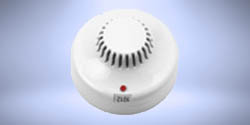
Optical Smoke Detector
Smoke detectors have a light source inside the detector and a light sensor. Under normal circumstances the light does not reach the sensor. When smoke is present, light gets reflected off the smoke particles into the sensor which is then interpreted by the system as a possible fire.
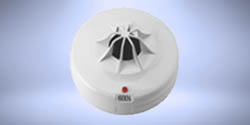
Heat Detector
Heat detectors use heat sensitive bi-metal strips to determine the temperature in the detector based on it's electrical conductance. If the temperature changes suddenly, the resistance of the metal strip changes and it is interpreted by the detection system as a possible fire.
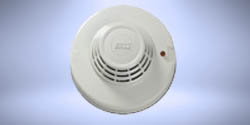
Ionization Smoke Detectors
Ionization type smoke detectors use the same principle as optical type smoke detectors but use a small amount of radioactive material to emit particles instead of using light as the detection medium. This type of detector is being phased out at all health facilities.
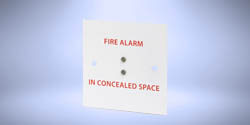
Void Detectors with LED Indicators
Void detectors are normally normal detectors which are installed in ceiling voids or other voids in the building. Because these detectors are not in plain sight, they are often installed with a LED indicator below the area where they are installed so that the device can be monitored.
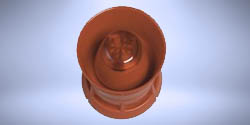
Sirens
Sirens or combined strobe and sirens are normally installed in smaller facilities where there is no voice alarm system installed or in areas where the type of work prohibits the use of voice alarm systems. The siren creates a audible alarm tone when the fire system is in alarm mode.
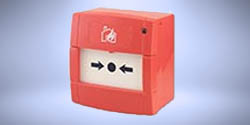
Manual Call-Point
A manual call-point is a simple switch which when activated sends an fire alarm signal to the panel. The button is manually activated by pressing on the face element of the unit. Call points come in resettable or glass element type units. Resettable type units can be reset with a special key and is the preferred type.
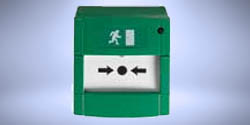
Door Release Unit
Door release units are visually and mechanically identical to manual call-points with the exception that they are coloured green instead of red. These units break the power circuit to magnetically held doors which enables to door to be opened. This button should override all access control systems.
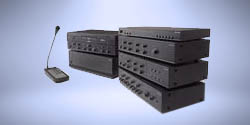
PA/Evac System
Larger facilities with overnight patients have PA and voice evacuation systems. This system will play per-recorded evacuation messages on the speakers installed throughout the hospital during an alarm event. The system often also includes a PA system to communicate with patients using a microphone.
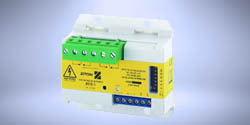
IO Relay
Relay units are normally used to control other devices based on the input from the fire panel. Relays are normally used to switch off ventilation and air conditioning equipment in the event of a fire but could also be used to control or accept controls from other equipment such as access control systems.
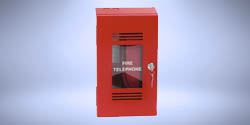
Fire Telephone
Fire telephones are normally connected to a central manned intercom system for emergency communication with the controller. The system is used during emergencies to enable the control room to communicate with teams on the floor.
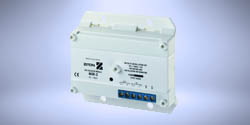
Isolator
A line isolator is used in the fire detection loop and is used to isolate faulty parts of the system to prevent the total shut-down of the system. It does this by isolating the faulty section of the loop thereby enabling the fire panel to continue operating without the isolated section.
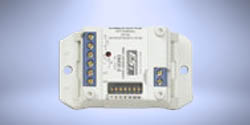
Interface Unit
An interface unit can be used to link an external detector or system to the fire detection system. This is normally used to monitor fire doors with magnetic sensors so that the fire panel activates when a fire door is opened but interface units can also be used for a wide variety of applications.
Service and Maintenance Requirements
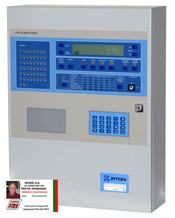
- All technicians should be registered at the SAQCC and should wear their badge at all times when they are on-site in addition to their company identification.
- The contractor has to sign in at security and must sign the fire panel logbook before any work is done to the system.
- The system must be serviced and tested once every calender year although four quarterly services is how the service is usually procured.
- Somebody should always be present during the service to ensure the components are tested correctly.
